Introduction
In computer science and computing, a keyboard is a peripheral or device for entering or inputting information. It consists of a set of keys or buttons arranged horizontally on a sheet, where they act as mechanical levers or electronic switches, thus allowing the user to enter encoded information into the computer system.

It operates in a similar way to typewriters: it associates a character, a function or a set of characters with each key, which when pressed by the user’s fingers, input a specific signal to the computer, tablet or smartphone.
This is probably the main way for the user to communicate with the computer system. It was also the first to be devised, at least as far as modern computers are concerned.
Today there are different configurations and model of the computer keyboard, depending on their ergonomic construction and internal logic. Some of them have even incorporated the functions of other peripherals, such as the mouse: they not only come in different languages, but are also adapted to the Operating Systems and computer models https://dessert-heaven.com/that exist on the market.
Table of Contents
A Brief History of the Keyboard
The history of the it begins with its direct adaptation of the typewriter, invented around 1868. The first modern examples actually belonged to teletypes and electric typewriters, or were a mechanism to communicate with computer terminals through a serial port.
In response, these first computers that did not have a monitor, used to turn on lights or directly print messages to communicate with the operator.
The first keyboards as we know them today appeared with home computers, a few years later. They came in an immense variety of versions and alignments, until the IBM AT Multifunction keyboard was established as the standard, given the success of the first personal computers of the brand, around the 80s.
These considered “standard” was developed by IBM in 1987. It was the MF-II (Multifunction II), created from the AT, and served for future innovations. Macintosh , for their part, incorporated this universal model, adapting it to the needs of their brand and their operating system.
Microsoft’s Natural Keyboard, which emerged with the most popular versions of Windows, was also famous. Its ergonomic advances and new functionality keys for PCs allowed greater control of multimedia peripherals, for example
How its work
A keyboard is a lot like a miniature computer. It has its own processor and circuitry that carries information to and from that processor. A large part of this circuitry makes up the key matrix.
The key matrix is a grid of circuits underneath the keys. In all keyboards (except for capacitive models, which we’ll discuss in the next section), each circuit is broken at a point below each key. When you press a key, it presses a switch, completing the circuit and allowing a tiny amount of current to flow through.
The mechanical action of the switch causes some vibration, called bounce, which the processor filters out. If you press and hold a key, the processor recognizes it as the equivalent of pressing a key repeatedly.
When the processor finds a circuit that is closed, it compares the location of that circuit on the key matrix to the character map in its read-only memory (ROM). A character map is basically a comparison chart or lookup table.
It tells the processor the position of each key in the matrix and what each keystroke or combination of keystrokes represents. For example, the character map lets the processor know that pressing the a key by itself corresponds to a small letter “a,” but the Shift and a keys pressed together correspond to a capital “A.”
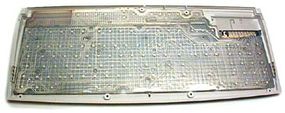
A computer can also use separate character maps, overriding the one found in the keyboard. This can be useful if a person is typing in a language that uses letters that don’t have English equivalents on a keyboard with English letters. People can also set their computers to interpret their keystrokes as though they were typing on a Dvorak keyboard even though their actual keys are arranged in a QWERTY layout.
In addition, operating systems and applications have keyboard accessibility settings that let people change their keyboard’s behavior to adapt to disabilities.
Keyboard Switches
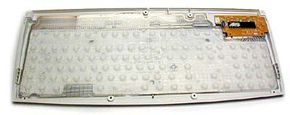
these are use a variety of switch technologies. Capacitive switches are considered to be non-mechanical because they do not physically complete a circuit like most other technologies. Instead, current constantly flows through all parts of the key matrix. Each key is spring-loaded and has a tiny plate attached to the bottom of it. When you press a key, it moves this plate closer to the plate below it. As the two plates move closer together, the amount of current flowing through the matrix changes.
The processor detects the change and interprets it as a key press for that location. Capacitive switch keyboards are expensive, but they have a longer life than any other keyboard. Also, they do not have problems with bounce since the two surfaces never come into actual contact.
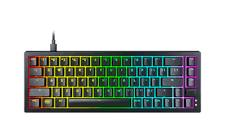
Parts of the keyboard.
Function keys
This is the first row of keys and you can find them at the top of the it. They are represented as F1, F2, F3 (…), and they are used to perform a specific function or to access program shortcuts.
Control keys
They are used alone or in combination with numbers to access functions or perform certain actions. The most commonly used are Ctrl, Alt, Esc and the key with the Windows icon (in the case of computers that have this operating system). On computers with the Mac OS operating system, one of the most commonly used keys is Command.
Typing or alphanumeric keys
Here are all the letters, numbers, symbols and punctuation marks. These keys are usually found in the same location as those on a typewriter.
Numeric Keypad
Used to enter numeric data quickly. The keys and symbols are grouped in the same way as they appear on calculators.
Special and Scroll Keys
These keys are used to scroll through documents or web pages and edit some text. These include: Delete, Home, End, Page Up, Page Down, Print, and the arrow keys.
With the Print key, located in the special keys area, you can take screenshots and thus show or send to others images of what you are seeing on your computer monitor or screen.
Keyboard Features
this is operate by means of a microcontroller, equipped with its own software, capable of performing matrix scans every time we press a key and thus know which one it was, and which character or function it corresponds to.
This happens by assigning each key a numerical value, through a code that is linked to its physical position, called Scan Code. This code, for example, is different when we press several keys at the same time, which allows the composition of many more signs than those drawn on it.
On the other hand, these communicate with the system in different ways, depending on whether they are physically separated from the CPU or if, as in laptops, they are part of it.
There are wireless keyboards, for example, that use WiFi technology, while others remain faithful to the connector cable. There are even detachable models, which allow the user to physically handle the different blocks that compose it separately.
Components of Keyboard
Many key component types make up a standard keyboard:
1. Keycaps: Visible keycaps have individually labeled detachable coverings for its keys, each with a distinct character or symbol. They offer a tactile surface for users to push, allowing them to enter data into a computer or gadget.
2. Switches: These devices sit under specific keys and capture pressed keystrokes. Different kinds of switches provide additional tactile feedback and actuation forces. Examples of these switch types are membrane, scissor, and mechanical.
3. Circuit board: The circuit board, sometimes called the printed circuit board or PCB, is the structural component that joins switches. Making it easier for electrical impulses to be transferred from the keyboard to the computer when keys get pressed is essential to theit’s functionality.
4. Backplate: Some are use plate-mounted switches or a backplate to provide additional stiffness and stability to these building, which makes the design more sturdy and secure.
5. Cables and connections: These are outfitted with connections and wires, forming a technical tapestry that connects them to computers. Whether they are USB, PS/2, or wireless connections, these wires create an art form of smooth communication. Advanced wireless keyboards might include additional features like Bluetooth modules that are ethereal.
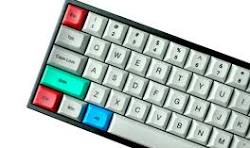
Types of keyboard
Flexible types
Flexible type can be bent or even submerged.
The simplest way to classify it by looking at their physical form, that is, their structure and industrial design. Thus, we have the following cases:
Classic keyboards: Those that are rectangular and follow the aesthetics of the standard IBM .
Ergonomic keyboards: Those that have been designed to adapt to the shape of human hands and not cause so much damage to their joints.
Multimedia keyboards: Those that have shortcut keys to various computer system functions, especially those that have to do with audio, video, connectivity or even certain applications.
Wireless Keyboard
These are link wirelessly to a computer using Bluetooth or radio frequency technology. Without connections, wireless keyboards provide greater flexibility and a neat workplace. It may connect wirelessly to computers using Bluetooth or USB Radio frequency (USB-RF). Numerous items can be compatible with Bluetooth models, which are generally accessible.
Without any kind of additional cables, theseare place a connection into the USB port on the computer and turn on Bluetooth on both the computer and the keyboard. It can be used with mobile devices and tablets as well as Windows and MAC computers. This facilitates a smooth user experience across various devices.
Flexible keyboards: Those produced from light elastic materials, such as silicone or soft plastic, and that can therefore bend over themselves, adapt to irregular surfaces or even some can be submerged in water, without affecting their functionality.
Projection Keyboards
A virtual keyboard can be projected onto a flat surface using projection keyboards, which use infrared or laser technology. Based on the disruption of the projected beams, typing is recorded. These are provide a small and lightweight input option. In order to project the itslayout, you’ll need a little portable device that you can attach to your computer via Bluetooth or USB.
The device projects a its layout using a laser once it is turned on. Typing on the projected its layout is as easy as using a standard keyboard. In comparison to other versions, projection keyboards are more expensive, and in order to project the layout, a solid, level surface is required. Furthermore, not all users may find the projection convenient and errors may arise from imperfect data quality.
Membrane keyboards: Discontinued due to their low resistance to use, they consisted of two thin plastic sheets or membranes, provided with conductive tracks on their inner face, so that pressing with the finger would allow the passage of the electronic signal.
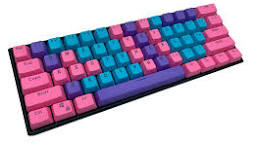
Gaming Keyboards
Designed with gamers in consideration, these are frequently have extra macro keys, backlighting, and configurable keys. Given their responsiveness and physical feel, mechanical switches frequently appear in gaming keyboards. It’s crucial to remember that although these are made with gamers in mind, regular typing jobs can also be completed with them. A user’s gaming habits, preferences and the particular characteristics they find helpful for their gaming experience all play a role in selectingit.
What else can a keyboard do?
A computer keyboard has many more functions than typing. Below are additional tasks you can perform using a it.
- Enter commands in a command line or another CLI (command-line interface).
- Use its shortcuts to perform tasks quickly. For example, using Ctrl+C to copy text and Ctrl+V to paste it elsewhere.
- Use the function keys to perform tasks. For example, pressing F5 in a browser to refresh a web page.
- Control computer hardware. For example, many can change your speakers’ volume.
- Use the arrow keys to move the text cursor on the screen.
- Use the WASD keys or arrow keys to move a character in a game.
- Use the numeric keypad to make calculations in a calculator.
Tips for safe keyboard use
If you spend many hours in front of a computer, proper use will also reduce the chances of wrist, hand and arm pain or injury. Below are some suggestions for better usage:
Set this at elbow height. Forearms should rest comfortably at your sides.
Type with the it just in front of you. Use the space bar as a guide for centering (although this reference only works if your keyboard has a numeric keypad).
Keep your hands and wrists raised above the keys so that if you need to reach a key far away, you use your whole arm instead of stretching with your fingers.
In typing, try to flat your palms or wrists down. If your keyboard comes with a wrist rest, you should only use that when not typing.
If you are typing, keep pressing the keys with a light hand and try to keep your wrist straight.
Any time you are not typing, drop your arms and hand.
Every 15 to 20 mins, take short breaks.
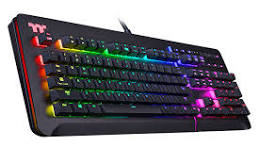
Deciding on the Best Computer Keyboard for Your Needs
When computer shopping, few things can be as frustrating as ending up with a brand-new laptop with a noticeably awkward keyboard. Whether you don’t like the key layout or you want to try to improve your productivity, a new this can offer plenty of benefits. Thankfully, today’s technology makes it easy to connect a different kind of this to your computer through Bluetooth or a wireless USB connection. Finding the best thing may take a little time and research, but the results are sure to be worth it.
Sometimes the easiest way to choose a of this to go with what you know and purchase one that carries the same features and layout as a recent model that you had and liked. Other times, it’s best to dig deep into the possibilities and consider all the available options. Here are a few questions to ask yourself as you work to determine the best keyboard for you:
- First things first: Do you prefer a wireless keyboard or a wired one?
- What are your main tasks to complete using this keyboard?
- Is the keyboard compatible with your existing computer system?
- First things first: Do you prefer a wireless keyboard or a wired one?
- What are your main tasks to complete using this ?
- Is the keyboard compatible with your existing computer system?
Consider the different types of computer keyboards and how each improves your user experience. Remember that many of this are designed with specific functions in mind, such as gaming keyboards, or ergonomic keyboards that work well for those who do a large amount of typing, like writers and programmers. Keep all of these aspects in mind, and be sure to read through some reviews to understand your options and the performance you can expect from any given model on the market.
